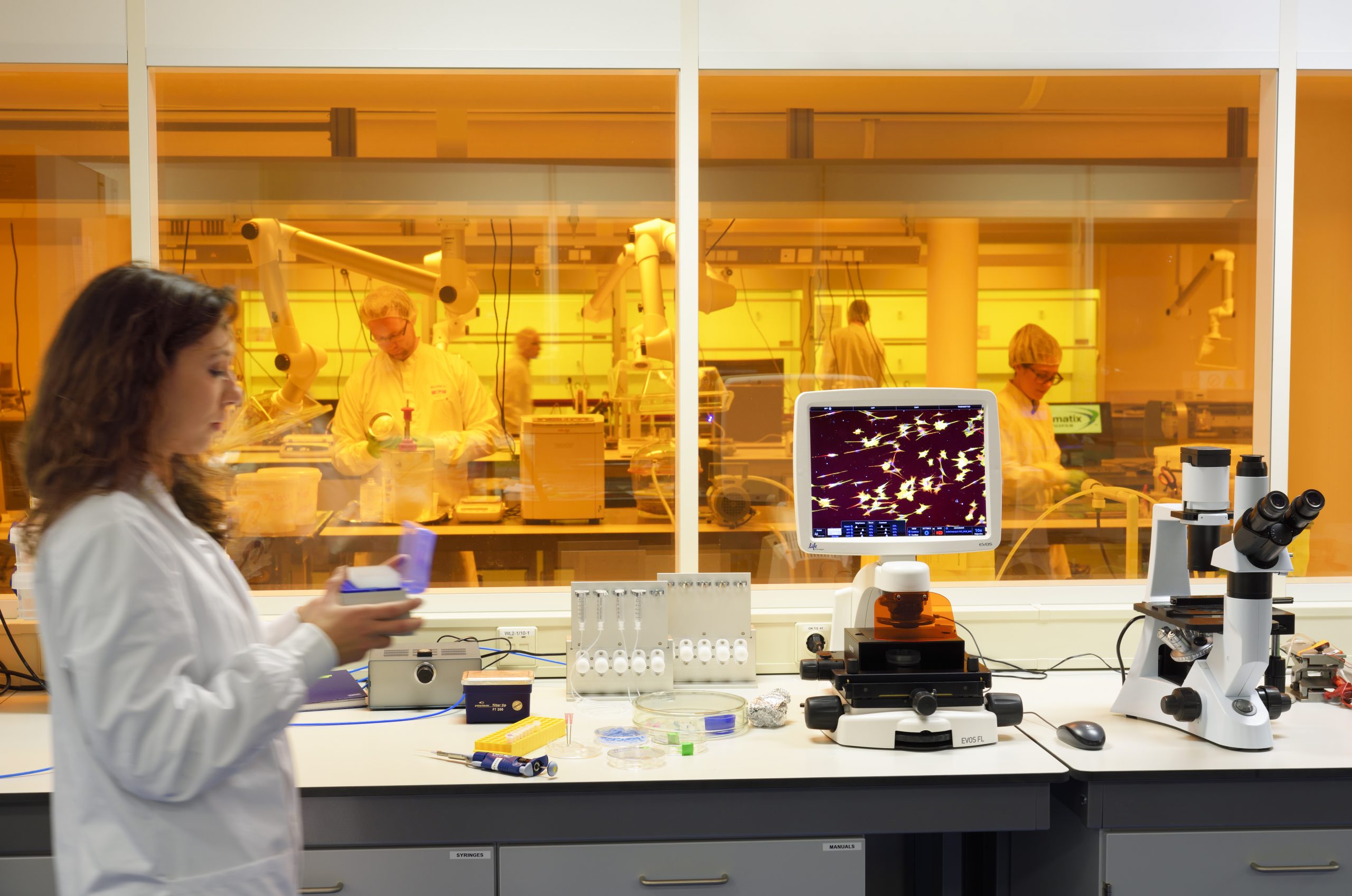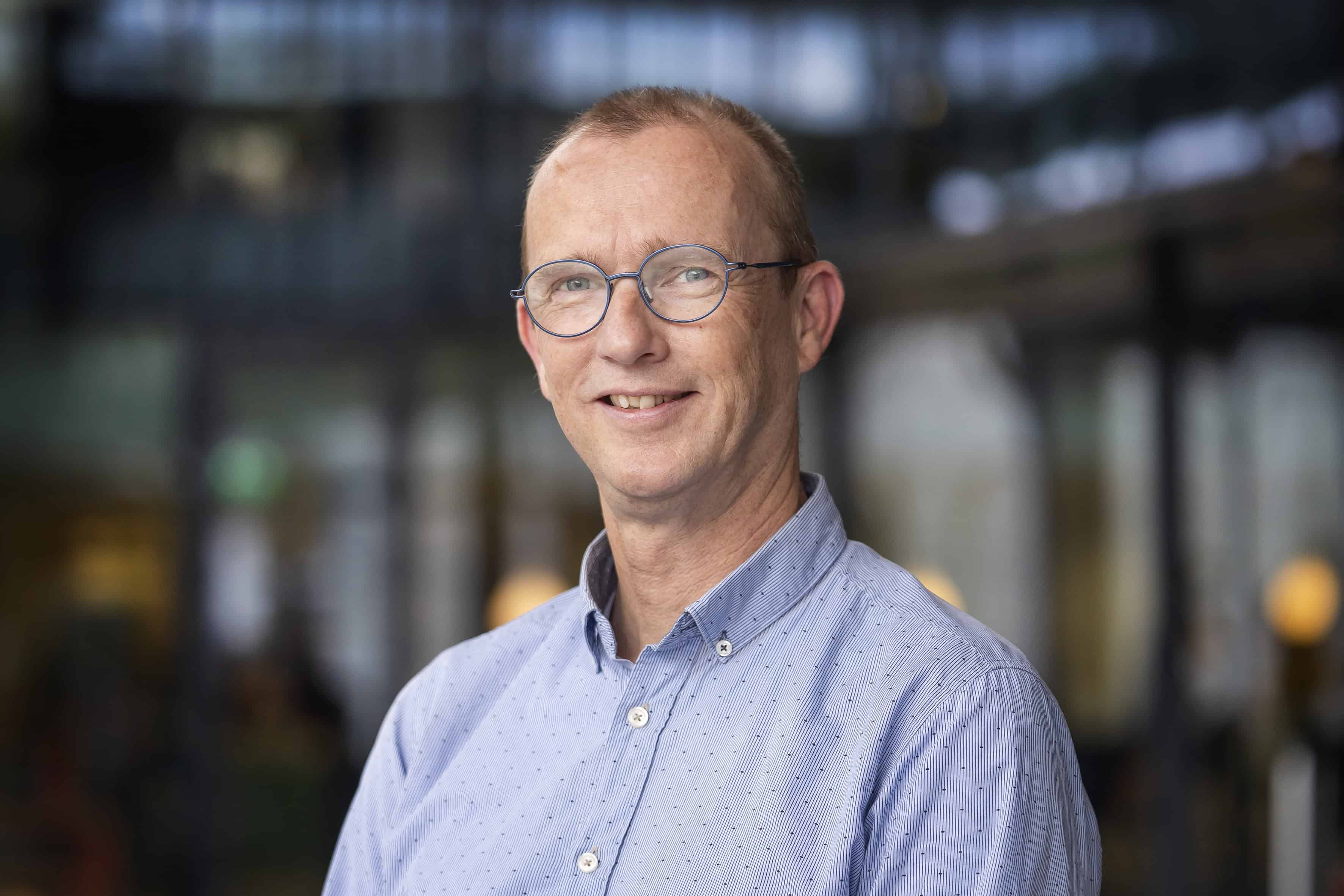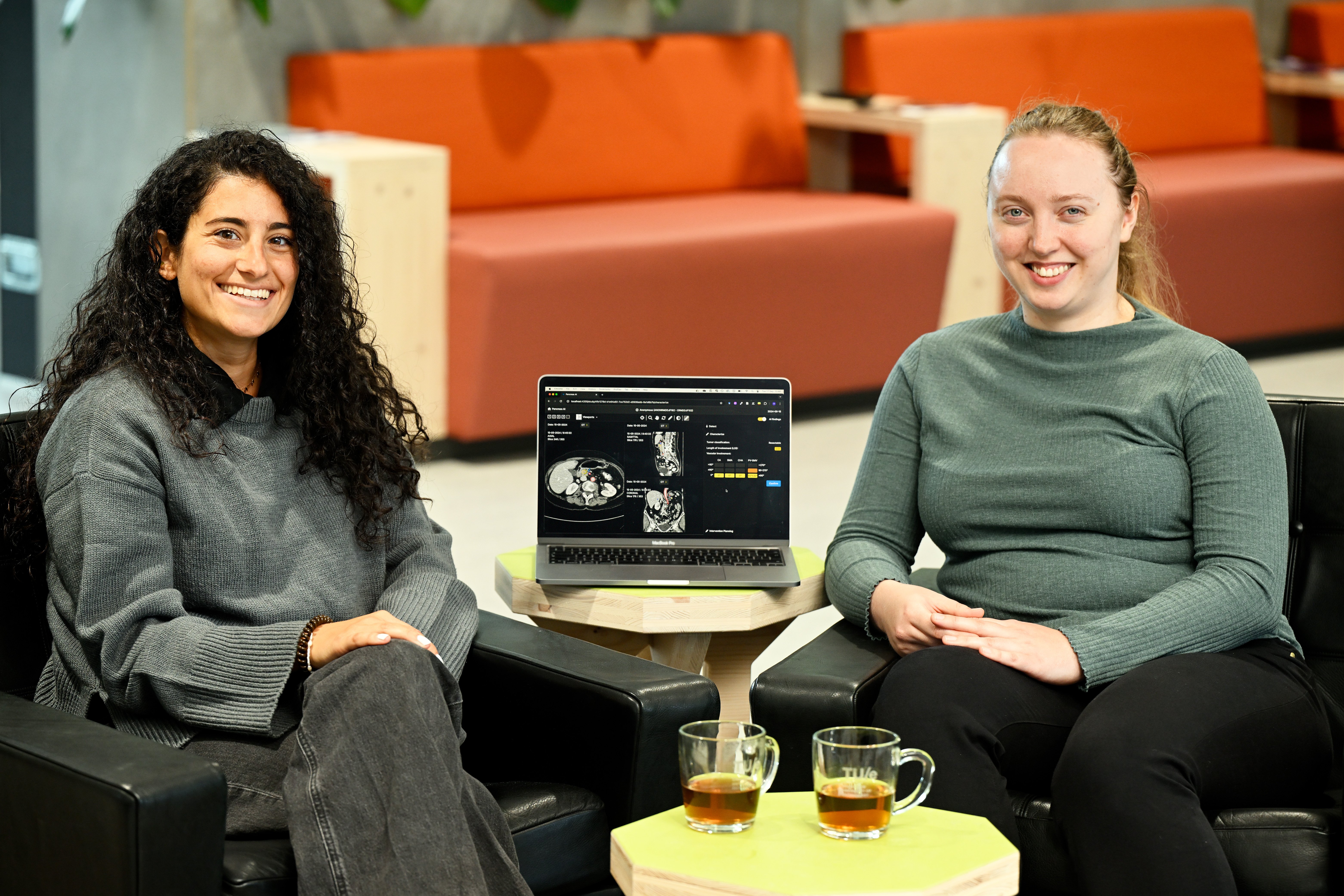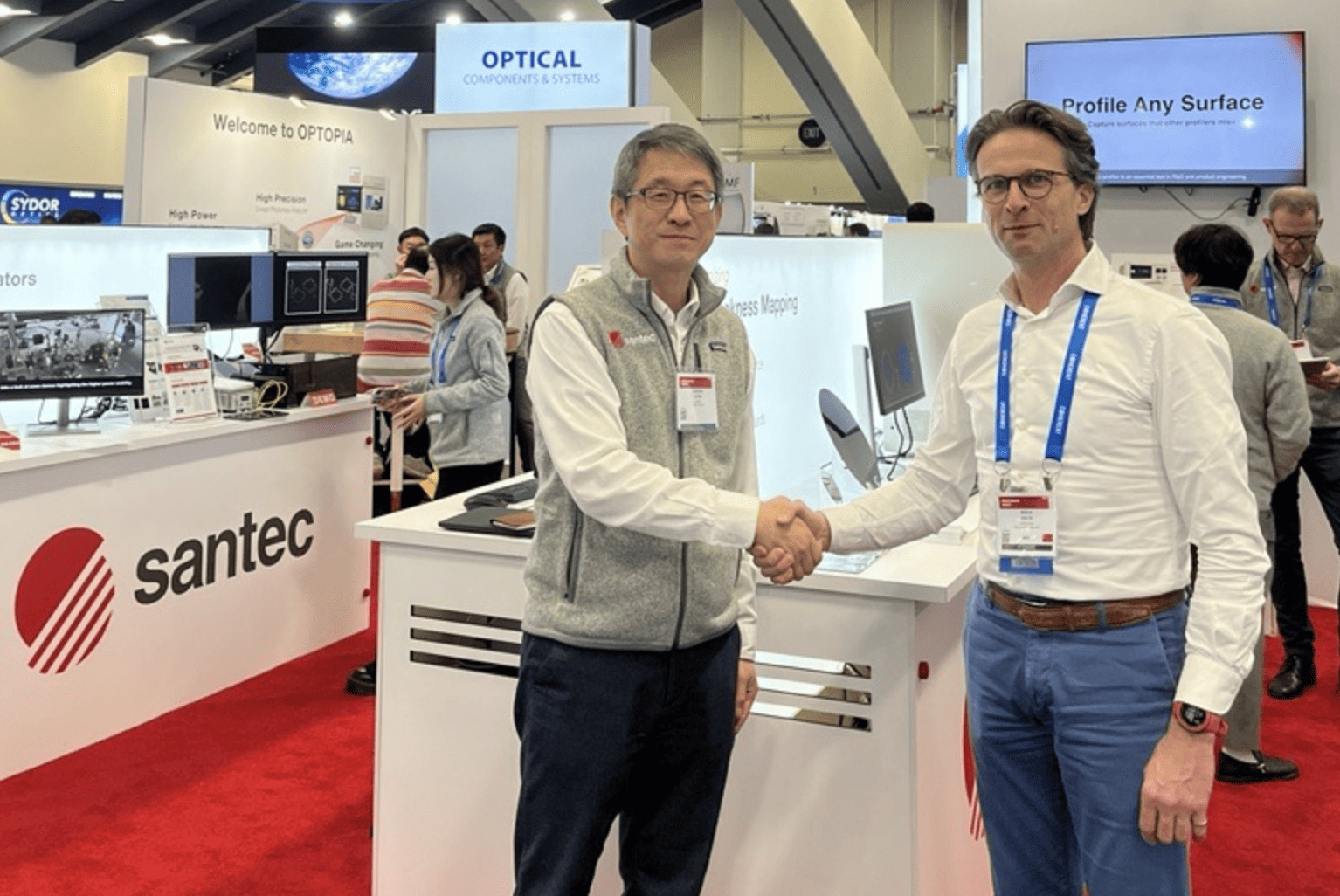
Detecting prostate cancer with new ultrasound imaging technology. Angiogenesis Analytics, a spin-off from the Technical University of Eindhoven (TU/e), wants to bring this method of diagnosis to the market within four years. Annually, 1.5 million men worldwide undergo the diagnostic process. “Thanks to our PCaVision technology, this process is more reliable, faster, and cheaper,” states Mark Bloemendaal, CEO of Angiogenesis Analytics.
PCaVision is a range of algorithms that uses sixty successive 3D ultrasound images to visualize the microvascular structure of the entire prostate. In doing that, the software detects and locates tumor tissue in the prostate. “The urologist can then see at a glance where potentially harmful tumors are and can, therefore, concentrate their research and treatment on these,” Bloemendaal explains. “Our technology is also cheaper than the alternatives out there because the software can be built into the ultrasound equipment that’s already used in hospitals.”
At present, there are two ways of diagnosing prostate cancer. Either via a systematic biopsy or with an MRI scan. When a biopsy is performed, a small amount of tissue is removed from sixteen to eighteen areas in the prostate using a hollow needle. “This is an invasive and often painful treatment that carries with it a significant risk of infection. What’s more, it’s not very accurate. There could be a tumor in-between areas where a biopsy has been obtained,” Bloemendaal points out. “An MRI scan is not painful for the patient, but it is more expensive. Apart from a urologist, a specially trained radiologist is also required in order to make the scan.”
Global market
“Seeing that our software is easier to use and provides a more accurate diagnosis and saves on costs, it is more readily accessible to a large group of patients around the world,” he continues. But in order to enter that global market, several clinical studies first need to be completed. Bloemendaal: “We’ll start the following clinical studies during the last quarter of this year. We will be making 3D images of the prostates of fifty patients. Then we will be able to see what the difference is between the outcomes of the MRI scans and our technology, amongst other things.”
All of those images will become part of a database. “This will enable us to develop the technology even further. Ultimately, the software must not make any mistakes and the system must be able to pinpoint very specifically where the tumor is,” Bloemendaal explains. During the clinical trial – which is to test whether the product is good enough from a medical point of view – the CEO is aiming to enter into talks with potential customers and other interested parties.
Discussions concerning implementation
“Many start-ups complete the clinical trial first and then obtain a certificate in order to launch the product on the market. It’s only after that, that they enter into dialogue with hospitals and insurers to ensure that patients can actually start using it,” he says. “We’re already having these discussions so that we won’t waste any time later once the product is ready for the market. These parties are jointly looking at, for example, procurement cost savings for insurers. Additionally, the implementation of this technology in the hospital process is also being looked into.” We are collaborating with various departments within the UMC Utrecht for this part. It’s extremely worthwhile to take a look together at the best technologies and the best processes that are associated with this.”
Cost savings
Public healthcare is a complex market, according to Bloemendaal. “But that’s what makes it so interesting. If this succeeds, we will be able to help 1.5 million patients per year. As well as generate an annual turnover of €500 million,” he says. Do this noble healthcare goal and that much turnover go hand in hand? They certainly do, Bloemendaal insists. “With our technology, hospitals can significantly lower their costs per patient throughout the diagnosis route. Which means innovation actually earns money. Then we’ll be able to draw up a business plan for it too. A combination of better care at lower costs is a fundamental premise for healthcare innovation in the present day and age.”
“On top of that, it costs a lot of money to develop these kinds of technologies,” he adds. “You can spend a million dollars just on one clinical trial. Although there is funding available in The Netherlands for this phase.” As an example, the Brabant Startup Fund recently invested €350,000. “But those kinds of funds are always limited. At some point, you should start functioning as a company and generate actual turnover.”
Complexity
As for the business side of things, Bloemendaal became involved in Angiogenesis Analytics through the NLC networking organization and the TU/e. “I studied electrical engineering and about nine years ago I started to immerse myself in healthcare technology. The complexity of this market appeals to me. I also want to do some good for other people. This fits in well with this sector.” He has already set up and supervised several start-ups. And he would also like to use this knowledge to help Angiogenesis Analytics as well.
Faith in the product
PCaVision is a textbook example of how fundamental research at the university can lead to new products on the market. The TU/e endeavors to support spin-offs as effectively as possible via its Innovation Lab. “For instance, we take a closer look at the business plan and help in finding funding.”That’s according to Bart Nelissen, the business developer at TU/e Innovation Lab. Bloemendaal agrees: “Where the funding world is concerned, the university really serves as a business card. That’s the first party that has been substantively involved and who truly has faith in our product. This also helps to persuade other financiers to come on board. Apart from that, they have a lot of expertise when it comes to funding bodies such as the Brabant Startup Fund. They know how the world runs. That’s fantastic.”
Marketing research seems to be becoming increasingly important within the university. “In the past, researchers saw the application of that as a brief paragraph that they had to fill in so that they could obtain funding,” Nelissen says. “Now they’re being asked to delve deeper into that. And actually look at how a company can do something commercially with their research”. According to the business developer, some researchers tend to focus completely on fundamental research. “But more and more researchers are knocking on our door who are interested in taking their product to the market. Sometimes the researcher effectively builds the company up by themselves. Whereas in other cases, we prefer to seek out an external ally.”
Faster development
Mark Bloemendaal was brought on board Angiogenesis Analytics for this very reason. He believes that the involvement of researchers is instrumental. “They understand what the technology can and cannot do, that makes it so much easier. The researchers at Angiogenesis Analytics have a share in the company’s profits and they are deeply involved in the development. That’s great to see.” Nelissen adds: “Moreover, they are intrinsically motivated to take this product forward. So, this means that they really do have a vision for the company. On the other hand, it’s nice to see that the spin-off progresses at a faster pace when an experienced person from the business world joins us.”








